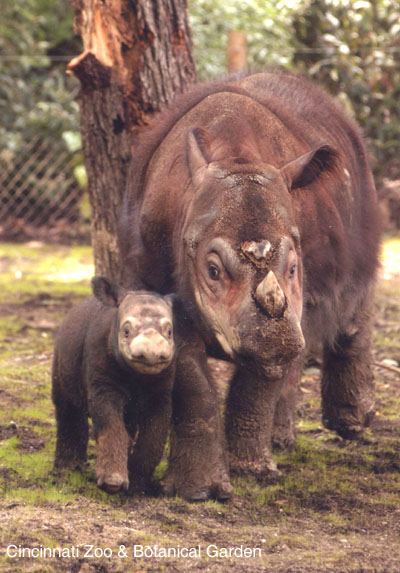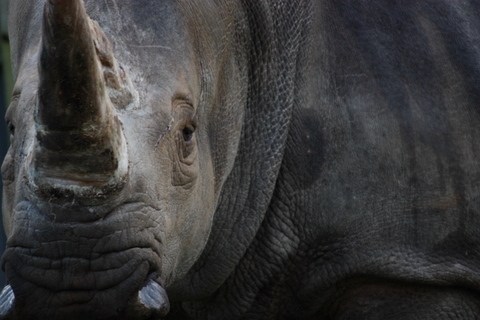The Center for Conservation and Research of Endangered Wildife (CREW) which is based at the Cincinnati Zoo and Botanical Gardens is playing a central role in the mission to prevent the extinction of the Sumatran rhino.

Through their research, CREW scientists have become world experts on the reproductive physiology of Sumatran rhinos. In an effort to increase animal numbers and improve genetic diversity, CREW uses science and technology to achieve numerous reproductive breakthroughs in these highly endangered Asian rhinos.
The Sumatran rhinoceros is one of the most endangered animals on earth with fewer than 270 individuals distributed throughout fragmented rainforests of South East Asia. A captive breeding program was formally established for this species in 1984, but efforts to propagate these rhinos in captivity failed.
In 1997, CREW scientists initiated research using endocrinology and ultrasonography to learn about the reproductive physiology of the species. As a result, scientific breakthroughs led to the first Sumatran rhino calf bred and born in captivity in 112 years at the Cincinnati Zoo on Sept. 13, 2001.
Since the birth of that first calf, two additional calves have been produced. This series of successful births clearly demonstrates how productive a captive breeding program can be when it incorporates good science, veterinary care, animal husbandry and intensive management. The Cincinnati Zoo remains the only place in the world breeding this species successfully in captivity.
In addition to its leadership role in the Sumatran rhino captive breeding program, CREW partners with other conservation organizations (Rhino Global Partnerships) to protect Sumatran rhinos in the wild by helping to support Rhino Protection Units (RPUs). These RPUs are trained to protect the rhinos from poachers, the greatest threat to the species. Furthermore, financial support and staff expertise are provided to facilitate the captive breeding program on Sumatra. The goal of the programme is to keep the rhinos safe in the wild and to establish a successful international captive breeding program for the Sumatran rhinoceros.
The return of a now adult Andalas to Sumatra in November 2007 was a significant and emotional milestone for the CREW team. It was the fruition of years of dedicated struggle marked as much by frustration and disappointment as by success and mini-miracles.
[youtube]http://www.youtube.com/watch?v=4P_Nrw5JdDc[/youtube]
When Dr. Terri Roth, the Director of CREW visited the Cincinnati Zoo’s first-born Sumatran rhino calf, Andalas, in his new home at the Sumatran Rhino Sanctuary (SRS) on Sumatra, she was delighted to find a rhino that is thriving in his tropical homeland. Weighing in at 770 kg, Andalas is now the largest rhino at the reserve and is bigger than his father Ipuh (at the Cincinnati Zoo). Andalas’s neck has thickened, and his interest in the female rhinos has become apparent, suggesting he may soon be breeding.
Despite all of these changes, Andalas has maintained his childhood love of people and the attention they give him. He is the most well behaved rhino in the reserve for blood collection, foot exams, ultrasound exams and many other hands-on procedures that help the staff maintain his excellent health. Andalas has never been sick or seriously injured and he has adapted to the new forest environment, the change in diet and exposure to many new insects that he hadn’t encountered in the US, without a hitch. We can be reassured that Andalas is clearly benefiting from the outstanding care and wonderful home the Sumatran Rhino Sanctuary provides and await exciting news of successful matings and future offspring!
See how Andalas is adapting to his new home and caregivers in this video footage!
[youtube]http://www.youtube.com/watch?v=8D3thlM7Ugk[/youtube]
______________
Special thanks to the Cincinnati Zoo and Botanical Garden for the use of photos and videos
